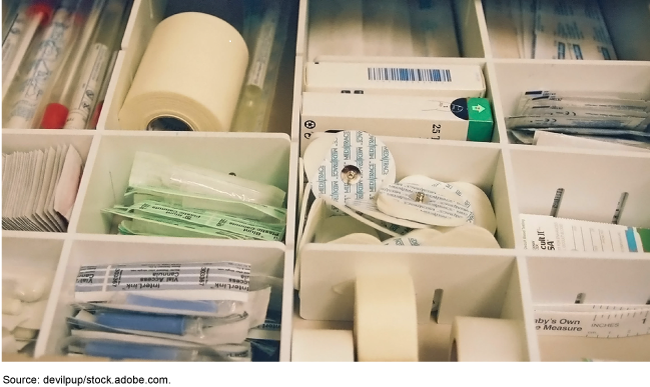VA Acquisition Management: Actions Needed to Improve Program Oversight and Acquisition Outcomes
Fast Facts
In 2017, Veterans Affairs created a process to better manage major acquisition programs that provide veterans with critical goods and services, like medical supplies. Yet none of VA's major programs follow it. Instead, they choose program-specific approaches that haven't led to positive outcomes, such as meeting planned schedules.
VA plans to replace the current process, but has yet to fix past problems with implementing it—like how to hold programs accountable for using it.
We testified on VA's problems managing major acquisitions and our prior recommendations. We added VA acquisition management to our High Risk List in 2019.

Highlights
What GAO Found
For over a decade, the Department of Veterans Affairs (VA) has worked to implement a framework for managing how it purchases goods and services, GAO found that VA has not used the current framework, in place since 2017, for its major acquisitions. This framework includes features—such as phases, key documents, and identified decision authorities—that could provide standardized management and oversight of VA's major acquisitions.
However, most of VA's major acquisition programs that GAO reviewed use program-specific approaches that vary widely in robustness. These approaches make it challenging for VA to provide uniform oversight for acquisitions and consistently identify opportunities to improve acquisition outcomes. For example, VA has not yet:
- addressed critical testing issues or developed performance measures for its costly Electronic Health Records Modernization program.
- determined which approach to take in implementing its Medical Surgical Prime Vendor program, a program intended to get critical supplies to the medical centers.
VA plans to implement a new framework that includes features and processes similar to those of the current one. However, GAO found VA is not well-positioned to successfully implement the new framework because it has yet to address existing challenges, such as identifying major acquisition programs subject to increased oversight within the new framework. If VA takes steps to address this and other challenges prior to implementing the new framework, the agency will be better positioned to achieve improvements in its management of major acquisitions.
Further, GAO added VA to the High-Risk List in 2019, noting that VA needs to address long-standing acquisition management challenges. VA made some progress, such as updating its acquisition regulations and developing a high-risk corrective action plan. However, VA leadership has yet to develop an approach for monitoring and demonstrating real progress in addressing long-standing challenges.
Additionally, GAO identified VA acquisition workforce issues as high risk, such as inadequate training and contracting officer workload challenges. VA acknowledged these challenges in its high-risk corrective action plan. Preliminary results from GAO's ongoing work indicates that VA does not have comprehensive data to accurately track the totality and characteristics of its acquisition workforce. Moreover, this work shows VA lacks clear documentation of roles and responsibilities for some acquisition workforce leaders. GAO is continuing its review in this area and will issue its report in the fall of 2022.
Why GAO Did This Study
Over the past 10 years, VA's total contract obligations increased substantially, rising 89 percent. In fiscal year 2021, VA obligated about $38 billion for goods and services. Program growth and VA's efforts to modernize its systems partly drove the increase. GAO added VA's acquisition management to its High-Risk List in 2019 due to numerous challenges to efficiently purchasing goods and services, including medical supplies.
This statement discusses VA's major acquisitions and broader acquisition management challenges, its efforts to address them, and implications for improving VA's overall acquisition management. This statement is largely based on information from GAO-22-105195 and preliminary observations from ongoing work on VA's oversight and management of its acquisition workforce.
To perform the ongoing work, GAO reviewed VA documentation, surveyed the acquisition workforce, and interviewed officials. Information about the scope and methodology of prior work on which this statement is based can be found in those products.
Recommendations
GAO has made numerous recommendations to VA aimed at improving its acquisition management. While VA has addressed many of them, VA still needs to develop a comprehensive supply chain management strategy, among other things. GAO will make additional recommendations, as appropriate, based on ongoing work.
